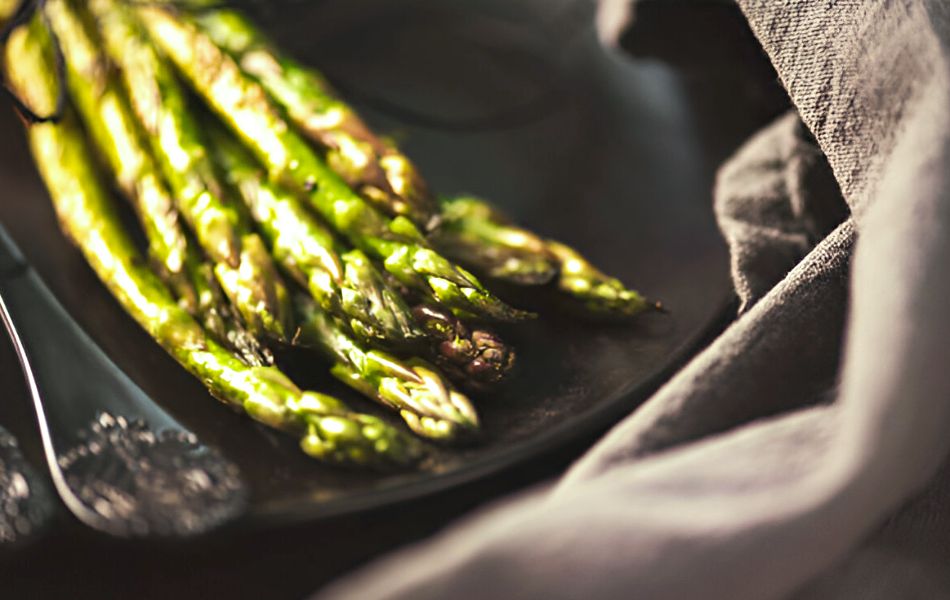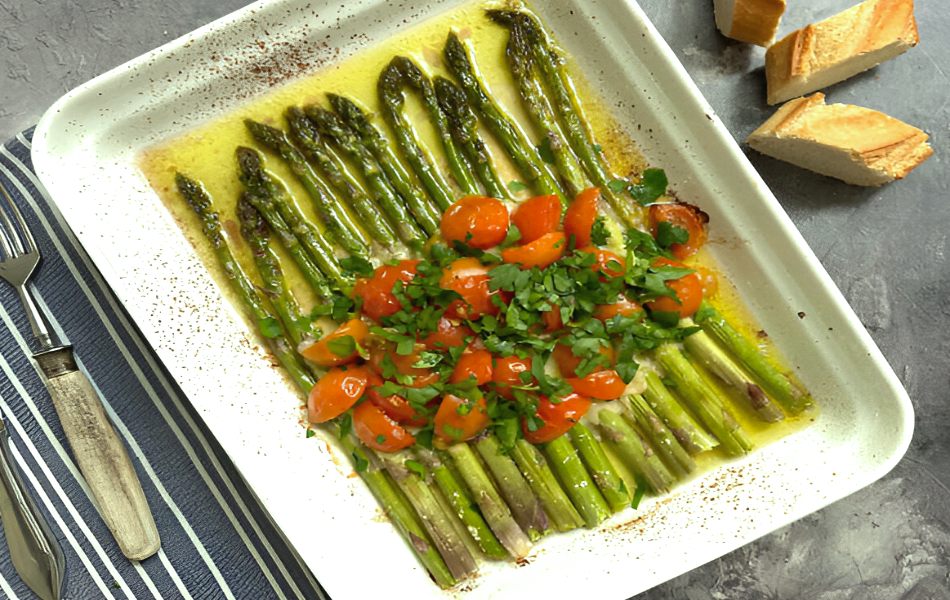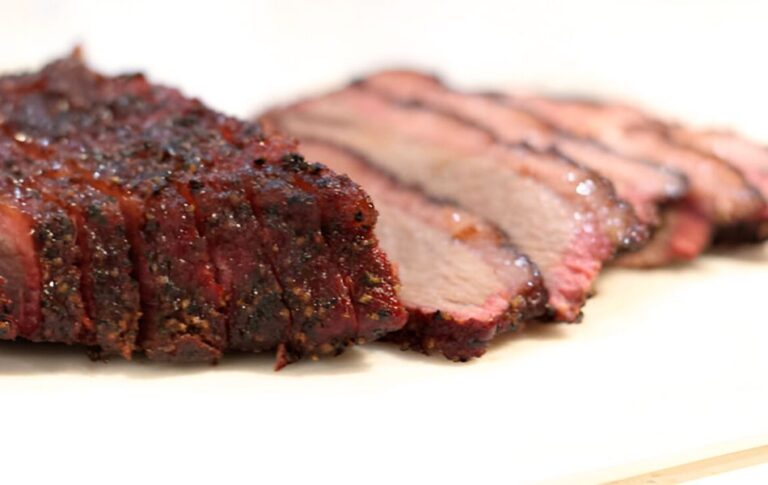Expert Tips for Cooking Perfect Asparagus
Asparagus is a tasty and healthy vegetable. It’s full of vitamins A, C, E, and K, plus folate and fiber. When you cook it the right way, it becomes soft and full of flavor. But if you cook it too long or the wrong way, it can get mushy or tough.
Whether you’re just learning to cook or love making fancy meals at home, knowing how to cook asparagus the right way is a great skill to have. In this article, you’ll find simple tips to help you bring out the best taste and texture in asparagus every time.
Why Cooking Asparagus the Right Way Matters
Asparagus tastes great and is full of good stuff like folate, vitamin K, and antioxidants. But if you don’t cook it properly, it can lose its flavor, texture, and bright green color. When you learn to cook asparagus the right way, your meals will taste better, and you’ll get more of its health benefits too.
Let’s go over some easy tips to help you get it just right.
Choose the Best Asparagus
1. Opt for Freshness
Always start with fresh asparagus. Look for bright, firm spears with closed and compact tips. Avoid stalks that are limp or have a dull color. Fresh asparagus will taste sweet and have a pleasant crunch.

2. Check the Thickness
Contrary to popular belief, the thickness of the asparagus doesn’t determine its tenderness. Both thin and thick stalks can be delicious when cooked correctly. Thick stalks are great for roasting and grilling, while thin ones shine in stir-fries and sautés.
Prep Work Before Cooking
1. Trim the Woody Ends
The bottom of the asparagus stalk is fibrous and tough, which makes it unpleasant to eat. To remove it, simply bend the asparagus near the bottom until it snaps naturally. This method ensures you’re only keeping the tender portion. Alternatively, line up your asparagus and slice off the woody ends with a knife.
2. Peel Thick Stalks
If you’re using thick asparagus, consider peeling the bottom inch or two with a vegetable peeler. This removes the tough outer layer and makes the stalks more evenly tender throughout.
Tips for Cooking Perfect Asparagus: Steaming Method
Steaming is one of the best methods for cooking asparagus, as it preserves the flavor and nutrients. To steam asparagus, you’ll need a steamer basket or a simple pot with a lid.
How to Steam Asparagus:
- Heat approximately one inch of water in a pot until it starts to boil.
- Place the asparagus in the steamer basket and cover.
- Steam for 3-5 minutes, depending on the thickness of the stalks, until tender but still crisp.
Steaming asparagus helps maintain its vibrant green color and crisp-tender texture, making it a favorite among health-conscious cooks.
Roasting Asparagus for Great Flavor
Roasting asparagus brings out its sweet taste and makes it nice and crispy. It’s a simple way to add more flavor without much effort.
How to Roast Asparagus:
- Heat your oven to 400°F (200°C).
- Put the asparagus on a baking sheet and add a little olive oil.
- Sprinkle with salt, pepper, and other seasonings you like. Garlic powder, lemon zest, or parmesan all work well.
- Roast for 12–15 minutes. Shake the pan halfway through so it cooks evenly.
Roasting gives you crispy tips and soft stalks – a perfect mix of textures.
Grilling Asparagus for a Smoky Twist
Grilled asparagus has a smoky, charred flavor that adds complexity to any dish. Whether you’re preparing a BBQ or just looking for a new way to cook your asparagus, grilling is a fantastic option.

How to Grill Asparagus:
- Preheat your grill to medium-high heat.
- Lightly coat the asparagus with olive oil, then season with a pinch of salt and pepper.
- Lay the asparagus on the grill or place it in a grill basket.
- Grill for 4-5 minutes, turning occasionally, until the asparagus is lightly charred and tender.
Grilled asparagus pairs wonderfully with grilled meats or can be served as a side dish with a squeeze of lemon.
Sautéing Asparagus for Quick and Easy Meals
Need a fast way to cook asparagus? Try sautéing! It’s great for small batches and gives the asparagus a tasty, savory flavor.
How to Sauté Asparagus:
- Warm up 1 tablespoon of olive oil in a pan over medium heat.
- Place the asparagus in the pan and sauté for 5–7 minutes, stirring occasionally.
- Sprinkle with salt, pepper, and extras like garlic or fresh herbs if you like.
Sautéed asparagus is quick, easy, and perfect for busy nights or adding a healthy green side to any meal.
Boiling Asparagus for a Soft Texture
Boiling is a simple method for cooking asparagus, especially if you prefer it tender. It works well for soups or pasta dishes.
How to Boil Asparagus:
- Fill a big pot with water, season with salt, and bring it to a boil.
- Put in the asparagus and cook for 2–4 minutes, depending on how thick it is.
- Drain the asparagus and place it in ice water right away to stop it from overcooking.
Boiled asparagus turns out soft and tender. Just don’t boil it too long – this helps keep more of the nutrients.
Seasoning Asparagus for the Best Flavor
The right seasonings can make asparagus taste even better. Salt and pepper are a good start, but a few extras can boost the flavor.

Tasty Seasoning Ideas:
- Lemon: A squeeze of lemon juice or some zest adds a fresh, tangy taste.
- Garlic: Cooked garlic gives a rich, bold flavor that goes great with asparagus.
- Cheese: Try grated parmesan or goat cheese for a creamy and sharp kick.
- Balsamic Vinegar: A little drizzle adds a sweet and sour flavor that brings out the best in asparagus.
Fun and Tasty Ways to Serve Asparagus
Asparagus is easy to use in many meals. Here are a few fun and simple ways to enjoy it:
- Asparagus Salad: Mix cooked asparagus with greens, cherry tomatoes, and your favorite dressing for a fresh and light salad.
- Asparagus Soup: Blend cooked asparagus with broth, cream, and spices for a smooth and cozy soup.
- Asparagus Pasta: Stir sautéed asparagus into pasta with garlic and olive oil for a quick, tasty meal.
Common Mistakes to Avoid
- Overcooking: Nothing ruins asparagus faster than overcooking. Keep a close eye on your cooking time, aiming for tender-crisp stalks.
- Skipping Seasoning: While asparagus is flavorful on its own, a little seasoning goes a long way. Always add a pinch of salt and a drizzle of oil before cooking.
- Cooking Stalks Unevenly: Make sure all spears are of similar thickness when cooking. Separate thick and thin stalks, or cook them in batches for even results.
Storing Leftovers Properly
If you have leftovers, store cooked asparagus in an airtight container in the fridge for up to 3 days. To reheat, use a skillet or microwave, but avoid overcooking them again.
The Perfect Side or Main Dish
Once you’ve mastered these tips, asparagus will become a versatile addition to your recipes. Serve it as a side dish with grilled chicken or steak, toss it into pasta and risotto, or add it to a hearty salad for some extra nutrients and texture.
See Also – Finding the Best Asparagus Substitutes
Take Your Cooking to the Next Level
Cooking asparagus isn’t just about following steps – it’s also about trying new things and seeing what you like best. Whether you roast, sauté, or boil it, these tips will help you get great results every time. Want to get better in the kitchen? Start adding more of this healthy and tasty veggie to your meals.







